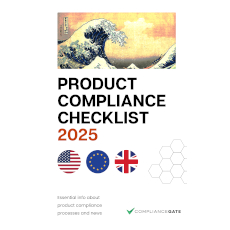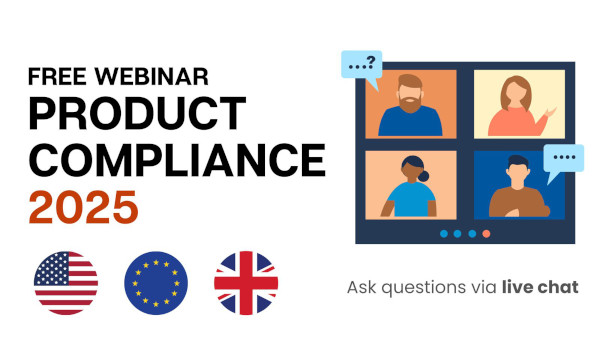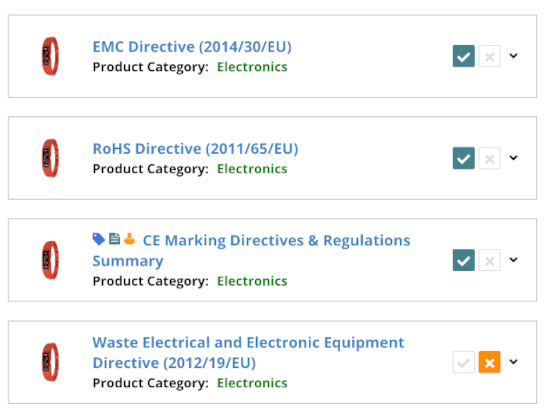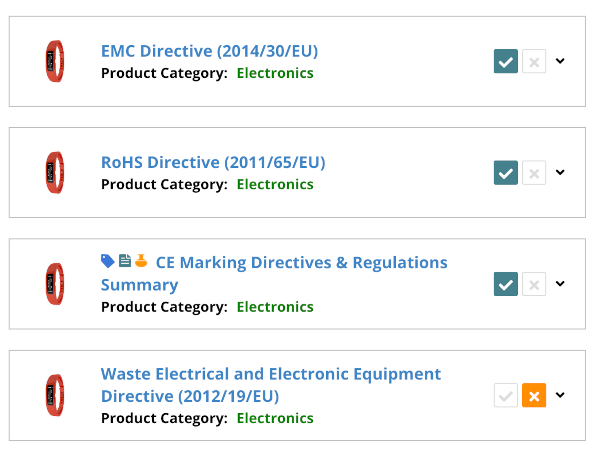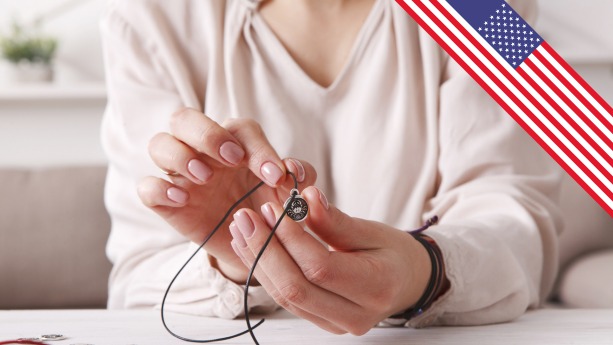
Entrepreneurs selling handicrafts and handmade products on Etsy and other marketplaces are, in general, subject to product safety, labelling, certification, and testing requirements. While compliance requirements still apply, certain methods can help you reduce the burden of high testing fees and complex requirements. That said, this can only be applied to certain product categories.
In this guide, we take a closer look at some of the key challenges faced by sellers of handicrafts and handmade products in the United States, and what you can do in practice to comply.
Handicraft examples
- Vases
- Home decoration
- Earthenware
- Woven textiles
- Wooden crafts
- Necklaces and bracelets
- Baskets
- Artworks
Handmade product examples
- Plush toys
- Baby carriers
- Art prints
- Handmade furniture
Content Overview

FREE CONSULTATION CALL (US, EU & UK)
- Request a free 30-minute call with Ivan Malloci to learn how we can help you with:
- Find product requirements
- Certification and labeling
- Lab testing
Are handmade products and handicrafts regulated in the United States?
Handicrafts and handmade products are generally subject to the same compliance requirements as mass-produced goods sold in the United States. As such, handicrafts must;
1. Not contain prohibited substances above the set limits
2. Comply with mandatory safety standards
3. Be correctly labelled, documented, and tested
This can present challenges to entrepreneurs making and selling handicrafts for the following reasons:
Understanding requirements
There is, at least as far as we know, no single regulation or standard specific to handicrafts or handmade products. As such, you will need to research applicable compliance requirements and determine how each of these relate to your product. This can be particularly difficult if you are selling products that belong to many different categories.
Testing costs
Lab testing can cost from a few hundred to thousands of dollars per product model. If you make products in a limited series then the testing fee alone could be multiples of your possible revenue – which doesn’t make sense.
That being said, not all products are subject to the most stringent compliance requirements. Further, there are methods that can be applied to reduce the burden of testing costs and paperwork when selling handicrafts and handmade products. This is explained further down in this guide.
But first, let’s take a look at a few key US regulations and how these relate to handicrafts and handmade items.
Consumer Product Safety Improvement Act (CPSIA)
The CPSIA covers products for children aged between 0 to 12 years. It covers both toys and other children’s products, such as furniture, baby carriers, strollers, car seats, and so on.
Generally speaking, compliance with the Act requires that US importers or manufacturers complete the following steps:
1. Ensure that your product is designed according to the applicable ASTM standards, such as ASTM F963-23
2. Arrange testing with a CPSC-accepted lab
3. Issue a Children’s Product Certificate (CPC)
4. Affix tracking label
Additional requirements apply to baby cots and other products classified as durable infant and children’s products.
The CPSIA does not exempt handcrafted or handmade children’s products. This makes sense, as a handmade baby carrier or toy could still be a safety hazard.
That being said, companies producing less than 7500 units in the previous year can apply to become small batch manufacturers. Such entities are exempt from using a CPSC-accepted lab test under certain requirements. However, the following products and substances are not exempt from testing by a CPSC-accepted lab:
- Lead content in paints and coatings (applies to all materials)
- Durable infant or toddler products
- Pacifiers
- Small parts
- Lead in children’s metal jewelry
- Baby bouncers, walkers, and jumpers
It should also be noted that you must still demonstrate why your product is compliant with the requirements that are exempt from testing by a CPSC-accepted lab.
In short, registering as a small batch manufacturer can help you cut some testing costs when manufacturing handicrafts or handmade products. However, this should not be understood as a blanket exemption from the overall CPSIA requirements.
If anything, the exemptions are quite narrow and may not make that much of a difference, considering that most Etsy sellers likely do not have the ability to determine if their products are compliant.
19 CFR Part 134 – Country of Origin Marking
19 CFR Part 134 mandates country of origin marking on products sold in the United States. Subpart D lists exceptions for some products that could potentially be considered as handicrafts:
- Bags, jute
- Buttons
- Flowers, artificial
- Rags (including wiping rags)
Note that country of origin marking requirements can still apply to the packaging of listed products.
19 CFR Part 134 also contains specific country of origin marking requirements for Native American-style arts and crafts:
For the purpose of this provision, Native American-style arts and crafts are arts and crafts, such as pottery, rugs, kachina dolls, baskets and beadwork, which incorporate traditional Native American design motifs, materials and/or construction and therefore look like, and could possibly be mistaken for, arts and crafts made by Native Americans.
We could not find anything in 19 CFR Part 134 indicating that handicrafts and handmade products are generally exempt from country of origin marking.
Further, the COOL Online Act has been introduced to extend country of origin declarations to online stores and marketplaces. This is, at least in part, aimed at preventing businesses from falsely advertising mass-produced goods as handicrafts.
16 CFR Part 303 – Rules and regulations under the textile fiber products identification act
16 CFR Part 303 sets textile fiber labeling requirements for clothing and other textile products sold in the United States. For example, a cotton t-shirt must carry a label declaring 100% cotton.
We could not find any blanket exemption for handicrafts or handmade textiles. However, 16 CFR Part 303 does exempt some materials and parts used to make handicrafts:
(b) Pursuant to section 12(b) of the Act, all textile fiber products other than those identified in paragraph (a) of this section, and the following textile fiber products, are excluded from the Act’s requirements:
(1) Belts, suspenders, arm bands, permanently knotted neckties, garters, sanitary belts, diaper liners, labels (either required or non-required) individually and in rolls, looper clips intended for handicraft purposes, book cloth, artists’ canvases, tapestry cloth, and shoe laces.
The only exemption we could find that may relate to finished handcrafts is limited to hand woven rugs made by Navajo Indians:
(8) All hand woven rugs made by Navajo Indians which have attached thereto the “Certificate of Genuineness” supplied by the Indian Arts and Crafts Board of the United States Department of Interior. The term Navajo Indian means any Indian who is listed on the register of the Navajo Indian Tribe or is eligible for listing thereon.
California Proposition 65
California Proposition 65 restricts phthalates, heavy metals, and other substances in consumer products sold in California. Products and materials that may contain amounts of, for example, DEHP or lead above the set limits require a warning label. Third-party testing is often required to verify compliance.
We could not find any indication that California Proposition 65 specifically exempts handicrafts and handmade products. That being said, there is an exemption for businesses with less than 10 employees, which is likely the case for most Etsy sellers producing and selling handicrafts.
There are also ways to ensure California Proposition 65 compliance by procuring materials from compliant sources. See the materials and components section in this article for more information.
How can I determine the country of origin for handicrafts or handmade products?
Assuming your product is not exempt, your next challenge lies in determining which country of origin to specify. If you buy materials and components from other countries, or even from domestic suppliers importing these, the country of origin is not always obvious.
That said, detailed information about how to determine the country of origin can be found in the following parts:
- 19 CFR Part 102 – Rules of Origin
- 16 CFR Part 323 – Made in USA Labeling
Which products should be avoided?
Handicrafts and handmade products are generally not exempt from product compliance requirements in the United States. Certain products that carry a higher level of risk require third-party lab testing, which may not be economically feasible when producing a limited series of handicrafts or handmade products.
That being said, not all products carry such risks and can therefore be more suited for entrepreneurs selling handicrafts. Certain garments, jewelry for adults, home decor and other items could potentially belong to this group.
Materials and components
Substance testing can cost a few hundred dollars per material or component. This can quickly add up if you are, for instance, making handmade jewelry consisting of many different materials and components.
Unlike mechanical testing, substance compliance can be achieved if you can obtain test reports from your material and component suppliers. This will likely require that you procure materials and components from domestic US wholesalers or manufacturers.
Design and mechanical safety
Toys, children’s products, products that contain batteries, and many other products are subject to design and mechanical safety requirements. For example, toys for certain age groups should not contain small parts or parts that can detach. Ensuring compliance with such requirements requires an understanding of the applicable product standards. Further, third-party testing is often mandatory.
Product and packaging labelling
Handicrafts and handmade products are generally subject to the same labeling requirements as other products. In practice, labels can be applied to handicrafts in many ways. Here are a few examples:
- Adhesives
- Laser engraving
- Hang tags
Keep in mind that removable stickers and hang tags are not always sufficient.


